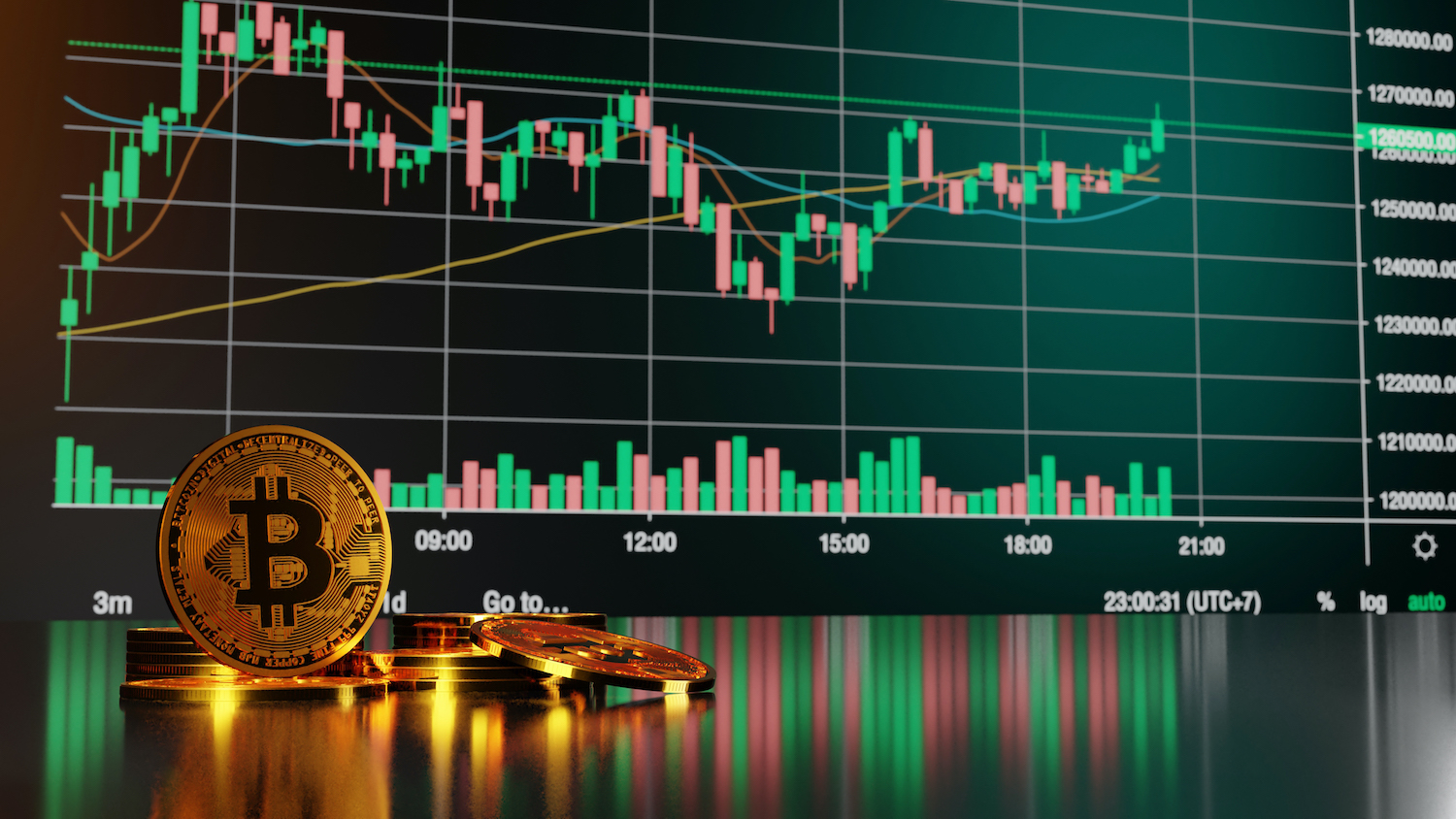
Internationally, there are now hundreds of crypto assets. A wide range of individuals and firms showed a strong, sharp rise in demand for these assets in recent times. Although the market valuation of crypto assets increased by 3.5 times to $2.6 trillion in 2021, they still make up a very modest part of the total assets of the international economic market. They are expanding quickly; there are currently few direct links between crypto-assets and the fundamental currency sector and significant financial organisations. However, despite starting from a low basis, professional participation in the cryptocurrency industry has increased over the past year, both as buyers and service providers. Worldwide financial sustainability may be affected if the size and connectivity of crypto-assets to these organisations stay on their current trend of growth.
Value of the Cryptocurrency Asset Class
The valuation of assets like cryptocurrencies may potentially be a concern for investors. There are numerous methods for estimating probable future costs for the commodity as bitcoin will not provide free cash flow. Predicted market values by 2026 range from $100,000 to more than $500,000 utilising four effective techniques of pricing: the gold pricing technique, stock-to-flow approach, organisational participation strategy, and high-net-worth participation technique. The stock-to-flow concept failed completely to precisely measure the value of bitcoin.
Given that this asset class is still in its infancy, investors should take a variety of technical indicators into account when determining its great possibilities.
Price History and Predictions
Bitcoin
Most crypto users are familiar with the history of Bitcoin’s pricing. This currency has developed into one of the largest assets in the globe from just being absolutely almost insignificant. Bitcoin’s market cap peaked even greater than a number of well-known companies. Significantly, with a predetermined total number of 21 million coins, bitcoin was the first rare digital money ever established. The cost for a single bitcoin increased significantly for the first time in the cryptocurrency’s history in 2010, rising from a relatively small amount of money that is $0.09. The “halving” system reduces the regular source by 50% for four years when all 21 million coins have been produced. About 19 million coins have so far been produced, of which 5 million are thought to be stolen, 10 million are kept in long-term cold storage, and just over 3 million are traded on platforms. The viability of bitcoin as an asset class depends on its volatility.
Bitcoin’s uncertainty has been in a more steady rule since 2014, levitating between 50% and 100% and reducing for years. Crucially, cryptocurrency demonstrates fairly low correlation coefficients (roughly 0.1) to other asset categories, so the effect of its greater volatility is much more subdued in a wider scope investment. Before making even a small investment, it’s critical to conduct an in-depth study and gain a thorough understanding of how cryptocurrency operates. Make sure you select the appropriate platform from the many available options. Some cryptocurrency traders use websites to trade in a secure environment. Immediate Edge is one of the better choices out there, especially if you are just starting your crypto journey, as you will have the chance to be connected with an appropriate broker, who has the skills and resources to assist you in making better trading decisions.
The lowest value of Bitcoin in 2022 is less than $20 000 per a technical study of predicted price changes. The highest price that bitcoin may go is $41,180.91. The predicted average trading cost is $38,288.89.
Ethereum
The commonly traded Ethereum was established in 2015. It is the second-largest cryptocurrency in terms of market capitalisation and experienced a strong bull run in 2017. The total transaction costs for Ether increased significantly last November 2021, from $321 million in the third quarter of 2020 to $1.96 billion during the third quarter of 2021, according to the Bankless newsletter from expert Ben Giove. The complete transaction price rose as well, climbing up to about 398 per cent year over year to $536.48 billion in Q3 2021.
Ever since hitting its all-time peak, Ethereum has been having difficulties. Ether has been susceptible to the most current cryptocurrency collapse, much like Bitcoin and the larger cryptocurrency market. Experts believe this might mark the beginning of another bull market because it has lately started to show indications of restoration. However, not everyone believes it will endure over time. Ether, however, was unable to maintain these record levels as December brought forth additional difficulties, causing the cryptocurrency to drop to a low of $3,628 at the end of the year.
Despite the fact that costs have already fallen, many traders remain confident that Ethereum will experience a similar or even greater increase in value than it did in 2021. According to some financial analysts, Ethereum will start trending downward and has already surpassed crucial support near $1,000. Ethereum and the larger crypto marketplace may be near the bottom after a six-month pullback. Ethereum may conclude the year at around $1500 if there is a recovery and investors purchase the drop.
Dogecoin
Since its 2013 inception, Dogecoin’s price movement has been quite consistent with that of the market as a whole. It has fluctuated up and down with the general bull and bear market cycles. However, Dogecoin experienced the most price change in 2021, elevating it to the position of leading cryptocurrency investment.
Following the halving of Bitcoin in 2020, the crypto market began to surge, and Dogecoin began to gather upward speed. Elon Musk, one of the most powerful people in the cryptocurrency world, twittered about Dogecoin as the bull began to gather traction, which increased its momentum in relation to the whole market.
Dogecoin saw a full-fledged bullish trend by January 2021, which reached May 2021 at a record of $0.73. Dogecoin, unfortunately, was never able to return to its all-time peak levels of $0.73 after the general market drop that began in May 2021 and continued through July.
The initial Dogecoin price was $0.1719 in 2022. Dogecoin’s price dropped -34 per cent from the start of the year to $0.1127 as of today. Dogecoin is expected to cost $0.18 at the end of 2022, with a +5% year-over-year change. The increase from now to the end of the year is +60%. Experts anticipate that the price of 1 Dogecoin will be $0.17 by mid-2022. The cost of Dogecoin will increase to $0.19 during the first part of 2023; in the second quarter, it will increase by $0.00 and during the end of the year, the value will become $0.19, which is +69% greater than the price at present.
Used as Investment Vehicle: Crypto Applications
One important consideration when assessing crypto as an investment vehicle is its background and function as a reserve currency. Since the advent of quantitative easing in 2008, asset prices have risen significantly across the world. However, if we compare asset performance to G4 central banks ’ balance sheets, we can see that stock prices have been flat since 2008. In contrast, the value of gold, property investment, and all major world currencies has decreased. In 2008, just one asset—Bitcoin—surpassed the balance sheets of the G4 central banks.
The usage of digital currencies as a payment option is possible. A cryptocurrency transaction that is documented on a blockchain can be made by one person to the other. As a result, the crucial question is not about whether virtual currencies could be used as a mode of payment but rather whether they are, or might be, a serious threat to the potential of an asset.
Earlier in 2021, Elon Musk made headlines when he revealed that Tesla would purchase $1.5 billion worth of assets and Bitcoins and begin taking it as payment for its automobiles. This was just another significant milestone for Musk in the automobile sector.
In 2014, Microsoft was one of the first companies to take bitcoin as payment for the purchase of video games, applications, and other media products in the Microsoft Store for systems like Windows Mobile and Xbox.
It seems obvious that the business that pioneered contemporary online currencies will be the one to overpower Microsoft if anyone were to do so. About 3 months after PayPal joined in September 2014, Microsoft started accepting bitcoin in December of that same year.
In March 2020, Starbucks declared that it was supporting the bitcoin movement. Starbucks took a cautious approach to adopt cryptocurrencies as payment, just like what Etsy did. While you cannot use bitcoin to purchase frappuccinos in-store, you can add this to the Starbucks app, among other payment methods like gift card credits and frequent flyer credits. There are other companies that adopt Bitcoin and other cryptocurrencies as a mode of payment aside from the three big companies mentioned above. Because they recognise crypto assets as a significant alternative to any kind of transaction and given that big companies are using them, the price value will most possibly increase also.
The Bottom Line
The enthusiasm in cryptocurrencies is only starting, despite the fact that bitcoin leads the news today and that numerous valuation techniques demonstrate its enormous potential. At the very same moment, we must be aware of the significant vulnerabilities that the investment vehicle currently carries. Ventures are uncertain; even those who appear to offer endless good returns may falter in certain financial realities. All the more volatile are cryptocurrencies. Ease up while investing; according to some, the best traders have perfected the ability to keep their composure even when things appear to be getting out of hand.









